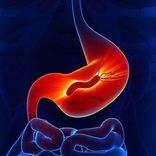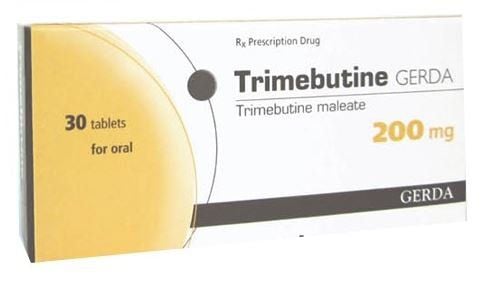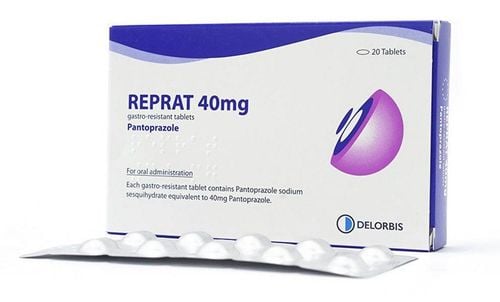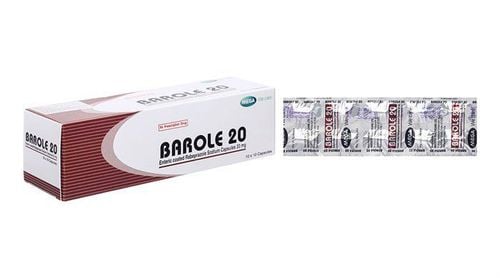1. The therapeutic effects of Nexipraz.
Nexipraz 40mg has the main ingredients is Esomeprazol 40mg and and excipients. Esomeprazole is a weak base activated in a highly acidic environment. It reduces acid secretion, helping to alleviate gastric and duodenal ulcers, reduce stomach pain, and manage Zollinger-Ellison syndrome, among others.
Indications for using Nexipraz:
- Treatment of gastroesophageal reflux disease (GERD);
- Treatment of gastric and duodenal ulcers;
- Treatment of Zollinger-Ellison syndrome;
- Prevention of recurrent gastric and duodenal ulcers in patients infected with Helicobacter pylori (HP).
Contraindications of Nexipraz:
- Hypersensitivity or allergy to the components/excipients of the medication;
- Simultaneous use with atazanavir;
- Severe liver disease;
- Children under 12 years old.
2. How to use Nexipraz and dosage
How to use: It is taken orally, swallow an intact tablet with water, do not chew or crush it. Patients can take Nexipraz at any time in the day, before and after meal. However, patients should take in the same time everyday.
Dosage
Dosage in adult:
- Treatment of gastroesophageal reflux disease (GERD) with erosive esophagitis: 40mg/time/day in 4-8 weeks.
- Treatment of gastric and duodenal ulcers: In combination with antibiotics for Helicobacter pylori (HP) infection, use Esomeprazole 40mg/day + Amoxicillin 1g twice a day + Clarithromycin 500mg twice a day, and continue the treatment for 10 days.
- Treatment of Zollinger-Ellison syndrome: Initial dose of 40mg once a day. Then, maintain with a dose of 80-160 mg per day, preferably divided into two doses.
Dosage for other populations:
- Elderly patients: No dosage adjustment is necessary;
- Children under 12 years old: A different formulation may be more appropriate;
- Patients with kidney failure: No dosage adjustment is necessary, but caution is advised when prescribing for patients with severe kidney failure.
- Patients with liver failure: No dosage adjustment is necessary for patients with mild to moderate liver failure. For patients with severe stag, do not use more than a maximum dose of 20mg.
Missed dose: If the patient forgets to take Nexipraz, they should take it as soon as they remember. If it is near the time for the next dose, the patient should skip the missed dose and continue with the next dose as scheduled.
Overdose: Symptoms of an overdose of Nexipraz may include fatigue and gastrointestinal side effects. If any abnormal symptoms occur due to an overdose, the patient should seek immediate medical attention and be admitted for timely intervention.
3. Side effects of Nexipraz
Some side effects that patients may experience when using Nexipraz include:
- Common: Abdominal pain, nausea, diarrhea, constipation, headache, etc.;
- Uncommon: Insomnia, dizziness, drowsiness, paresthesia, dry mouth, peripheral edema, dermatitis, elevated liver enzymes, etc.;
- Rare: Thrombocytopenia, leukopenia, hyponatremia, hypersensitivity reactions, stomatitis, blurred vision, bronchospasm, muscle pain, joint pain, hepatitis, etc.
If you experience any unusual symptoms related to the use of Nexipraz, you should notify their doctor for advice and appropriate management
4. Precautions when using Nexipraz
Some important precautions for patients to remember before and during the use of Nexipraz:
- There is no research on the effectiveness and safety of Nexipraz in pregnant and breastfeeding women. To ensure safety, patients should consult a doctor before using this medication;
- Nexipraz may affect the ability to drive or operate machinery. Side effects such as dizziness and blurred vision may make it difficult for patients to perform tasks that require concentration, such as driving or operating machinery. Therefore, patients should be cautious;
- Do not use Esomeprazole (the active ingredient in Nexipraz) simultaneously with atazanavir. If it is really necessary to use both, close clinical monitoring is required;
- Do not use Esomeprazole together with clopidogrel;
- Esomeprazole may reduce the absorption of vitamin B12 due to the decline of gastric acid;
- There have been cases of severe hypomagnesemia in patients treated with Esomeprazole for at least 3 months (most cases occur after 1 year);
- Malignant tumors may mask or reduce symptoms in suspected gastric ulcers. Therefore, thorough examination and exclusion of malignancy should be performed before using Nexipraz;
- Patients taking long-term treatment with Nexipraz (for over a year) should be monitored regularly.
5. Drug interactions
Some drug interactions with Nexipraz include:
- Nexipraz reduces the absorption of ketoconazole and itraconazole;
- Nexipraz prolongs the half-life of Cisapride by about 31%;
- Nexipraz increases the plasma concentrations of citalopram, diazepam, imipramine, clomipramine, phenytoin, and others;
- Patients using Nexipraz alongside anticoagulants such as warfarin and heparin should be closely monitored, especially when starting and stopping treatment;
- Clarithromycin may inhibit the metabolism of Esomeprazole in Nexipraz, leading to a doubling of Esomeprazole concentrations.
Before using Nexipraz, patients should inform their doctor if they are taking other medications to receive appropriate advice and avoid harmful interactions. Additionally, patients must strictly follow the doctor's instructions to minimize the risk of dangerous incidents.
Visit the Vinmec International General Hospital website for more health, nutrition, and beauty information to protect your health and the health of your loved ones.
Please follow the website ofVinmec International General Hospital to keep up to date with the information about health, nutritions, and beauty to protect the health of yourself and your beloved family members.
To arrange an appointment, please call HOTLINE or make your reservation directly HERE. You may also download the MyVinmec app to schedule appointments faster and manage your reservations more conveniently.













